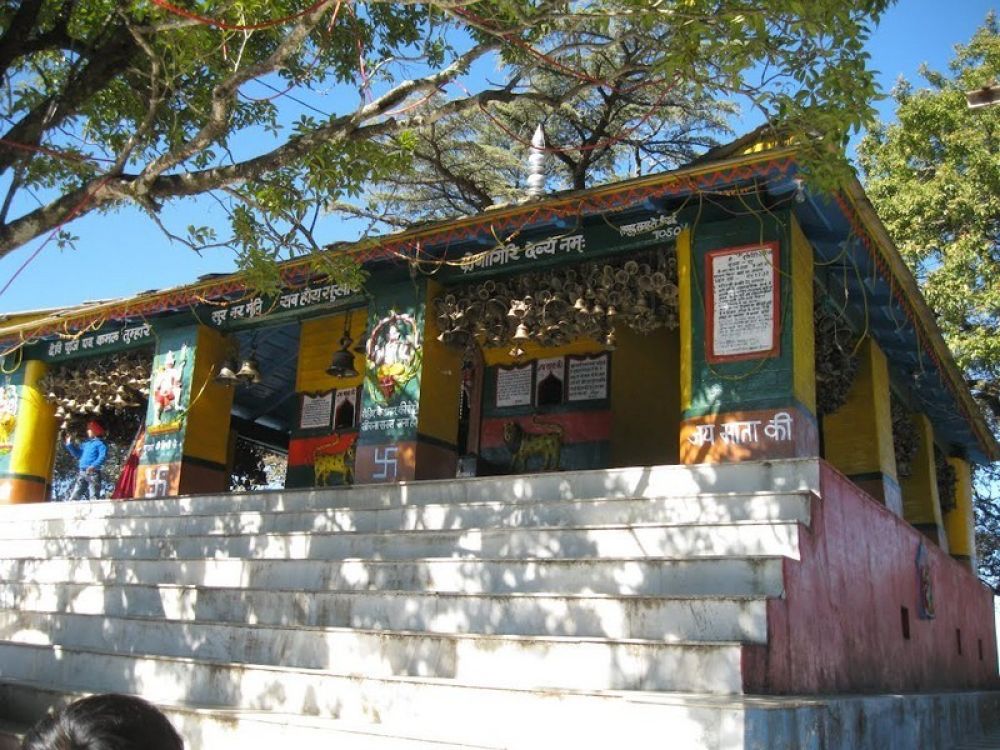

The serene town of Ranikhet, nestled in the northern Indian state of Uttarakhand, has long been a sanctuary for spiritual seekers and nature enthusiasts alike. Among its most sacred gems is the Dunagiri Temple, an ancient site steeped in myth and spirituality.
In the vast tapestry of Hindu mythology, Dunagiri Temple, also known as Drongiri or Doonagiri Temple, occupies a revered place. Associated with the goddess Durga, this temple is believed to be over 5000 years old, speaking to a deep reservoir of spiritual history. Legends tell that the deity of the temple, Goddess Dunagiri, blessed Lord Hanuman with the strength he required during the epic battle in the Ramayana saga.
Historically, this temple has been a pivotal point of pilgrimage, drawing devotees from across India to seek blessings and witness the power of the divine feminine. Its fabled origins and the miracles attributed to the goddess have rendered Dunagiri a potent site in the collective consciousness of the faithful.
Over the years, the tourism industry in Ranikhet and around Dunagiri Temple has blossomed, transitioning from a path predominantly tread by pilgrims to a thriving component of the state’s economy. Tourism here has been thoughtfully developed to preserve the natural serenity and sanctity of the place while providing amenities for visitors.
Initially, the journey to the temple was marked by rugged paths, but with growing interest, the infrastructure improved significantly. Roads leading to the temple have been enhanced, making access easier for more people. Local markets and accommodation facilities have also seen growth, catering to the diversifying needs of travelers.
Personalized spiritual retreats have become the latest trend in the area, offering visitors a chance to engage in yoga and meditation sessions in the lap of the Himalayas. Eco-tourism has also picked up, with various resorts and homestays making sustainability their cornerstone.
Adventure tourism is another aspect that has seen a rise in interest, with excursions such as trekking to nearby glaciers and forests. The temple serves not just as a site of worship but also a starting point for many such nature-based explorations.
Technology has also played its part, with virtual tours and online darshan opportunities cropping up during the pandemic, although with restrictions easing, the crowd of physical visitors is steadily returning.
When planning a visit, tourists are recommended to respect the local customs and environment. The best time to visit is from March to June and September to November when the weather is most pleasant. However, for those looking to experience the annual fair, visiting during the Navratri festival in April or October can be particularly enchanting.
Travelers are also encouraged to explore the surrounding areas of Ranikhet, like the Chaubatia Gardens, Bhalu Dam, and the Kumaon Regimental Center Museum to enrich their travel experience. Tourism initiatives often include guided tours covering these local attractions, providing a comprehensive understanding of the region's culture, history, and natural beauty.
As tourism continues to evolve around Dunagiri Temple, the essence of this spiritual haven remains unchanged, offering peace, beauty, and a slice of ancient Indian narrative to all who visit.
Visitors can reach Dunagiri Temple by road from Ranikhet, which is well-connected to major cities like Nainital, Almora, and the state capital, Dehradun. The nearest railway station is Kathgodam and the closest airport is Pantnagar Airport, followed by a scenic drive to the temple.
Whether you are seeking spiritual solace, an encounter with history, or the allure of the mountains, a visit to the Dunagiri Temple in Ranikhet is bound to be a memorable experience.